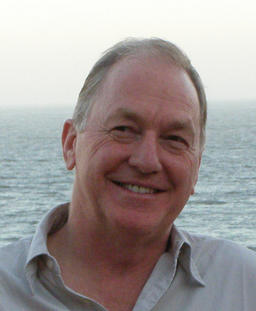Air Pollution:
How We Treat the Atmosphere Like a Sewer
Dr. Steyn has served as Associate Dean (Research and Faculty Development)
in the Faculty of Graduate Studies and Principal of the College for
Interdisciplinary Studies. His professional, teaching and research
activities are in the field of air pollution meteorology, boundary
layer meteorology, mesoscale meteorology, environmental science
and interdisciplinary science. His research involves measurement and
modelling studies of regional air pollution. He publishes regularly in
the international peer reviewed literature, and serves on editorial
boards of the journals Boundary Layer Meteorology and
Environmental Fluid Mechanics. He is an Accredited Consulting
Meteorologist, and has international consultancy experience in his areas
of expertise, and has provided expert testimony in numerous court cases
and appeal board hearings in British Columbia.
Background Information
(These references were compiled by
the webmaster in the hope that they will prove interesting to some readers.
The web being what it is, some of them will have vanished by the time
you go to look them up, and there is—of course—no guarantee
of their accuracy.)
-
UBC Geology faculty page
-
Air Pollution Meteorology
My research is primarily driven by an interest in the polluted
atmosphere, particularly at the regional scale. I conduct both
field measurement and numerical modelling in order to pursue
these interests. I have recently been involved in the Pacific
2001 and MAP-Riviera field campaigns,and am part of the
Multiscale Air Quality research Network (MAQNet). I have a
particular interest in model evaluation/ validation. ...
-
Air Pollution: The price for our way of life
-
[UBC Reports article by Duow Steyn and Michael
Brauer]
When most of us think of air pollution, images of factories
belching smoke or vehicles leaving behind a cloud of soot often
come to mind. Such conditions led to historical episodes of
deadly air pollution—the most notorious being the great
London smog in December of 1952 when there were approximately
12,000 excess deaths resulting from a 5-day period of intense
air pollution. With growing worldwide industrialization,
emissions have increased and become more widespread. The
introduction of more complex fuels, and combustion occurring in
a wider range of conditions, has led to growing toxicity of
emissions, and increasingly evident effects on ecosystems. ...
-
We want more action
-
The following is an extract from an Open Letter to the Prime
Minister of Canada, signed by 90 Canadian climate science leaders,
including Philip Austin, Stephen Calvert, Garry Clarke, William
Hsieh, Paul LeBlond, Lionel Pandolfo, and Douw Steyn from the
UBC Dept. of Earth and Ocean Sciences:
"We concur with the climate-science assessment of the
Intergovernmental Panel on Climate Change (IPCC) in 2001, which
has also been supported by the Royal Society of Canada and the
national academies of science of all G8 countries, as well as
those of China, India and Brazil.
"Canada needs a national climate-change strategy, with continued
investments in research to track the rate and nature of changes,
understand what is happening, to refine projections of changes induced
by anthropogenic release of greenhouse gases and to analyze
opportunities and threats presented by these changes. ...

